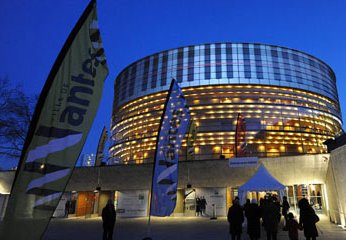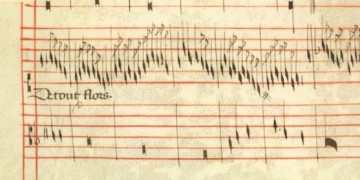Nantes, 2015
 It’s the last week of January, and I’m in France for the yearly mega-festival La Folle Journée. During 5 days, 330 concerts are being presented! (I play 5.) Folle Journée is the work of many people — especially René Martin, founder and artistic director of Folle Journée.
It’s the last week of January, and I’m in France for the yearly mega-festival La Folle Journée. During 5 days, 330 concerts are being presented! (I play 5.) Folle Journée is the work of many people — especially René Martin, founder and artistic director of Folle Journée.
Recently, talking with Tim Page, I realized just what significant influences the ideas of a few concert presenters, a few producers (and critics) have been on my musical choices and artistic path. Tim introduced me to Philip Glass, encouraging me to learn Philip’s music. And Tim started me on the music of John Adams and Alvin Curran. Some may imagine ideal artists working with unfettered freedom, and making completely personal choices. Human beings are more often (always?) reacting, to other people, places, and things.
If we consider music to be a group action, rather than solitary individual acts — then it’s normal for musicians to react, to fulfill needs.
 This year’s Folle Journée is a good example. Initially, René Martin asked me for a program concerning/linking the music of J. S. Bach and American minimalism. During the planning, René expanded the festival theme from early 18th-century music to something more widely ranging across the centuries — “Passions of the soul and the heart.” So wide, this theme provoked me to make programs I would not have made, illuminating coincidences and correspondences. These short programs (45 minutes is the length of concerts at Folle Journée) are the outcome:
This year’s Folle Journée is a good example. Initially, René Martin asked me for a program concerning/linking the music of J. S. Bach and American minimalism. During the planning, René expanded the festival theme from early 18th-century music to something more widely ranging across the centuries — “Passions of the soul and the heart.” So wide, this theme provoked me to make programs I would not have made, illuminating coincidences and correspondences. These short programs (45 minutes is the length of concerts at Folle Journée) are the outcome:
Program 1, Folle Journée 2015
Codex Faenza:
“Elas mon cuer”
Brahms: Intermezzo in A Minor, opus 116, no. 2
Codex Faenza:
“De tout flors” (Machaut)
“Che pena questa” (Landini)
Brahms: Capriccio in G Minor, opus 116, no. 3 (Allegro passionato)
Couperin: “La lugubre”
Couperin: “L’âme-en-peine”
Arvo Pärt: Für Alina
Brahms: Intermezzo in E Major, opus 116, no. 4 and Intermezzo in E Minor, opus 116, no. 5
Program 2, Folle Journée 2015
C. P. E. Bach: Les langeurs tendres
Schumann: Warum?, opus 12, no. 3
Glass: Gandhi’s Aria (from Satyagraha)
Schumann: Fantasiestück, opus 111, no. 1, Fantasiestück, opus 111, no. 2
Glass: “Opening”
J.S. Bach: from Der Kunst der Fuge: Contrapunctus 5 & Canon alla Ottava
In a piece like Brahms’s Capriccio in G Minor, opus 116, no. 3, marked Allegro passionato, the Christian implications of the word “passion” are not far away. Brahms’s fascination with early European vocal polyphony seems clear in his late piano music (the overlapping of cadence and continuation, the chromatic cross relations). Brahms was at least somewhat involved in the publication of François Couperin’s keyboard pieces prepared in the 1880s. The low-register sonorities and parallel lines of Couperin’s “La lugubre” seem Brahmsian…
In these programs, there’s a lot of dovetailing and harmonic inter-suggestiveness. The passion key of F Minor is the basic key of Glass’s “Opening.” C. P. E. Bach’s fragile Les langueurs tendres (again the passion key of F Minor) seems to be built on the inverted motif of Schumann’s Warum?
Couperin’s “L’âme-en-peine” is a B-Minor prelude to the B-ness of Pärt’s Für Alina which is a long dominant to Brahms’s E-Major Intermezzo. The calm arrival at C in the concluding phrases of Glass’s Satyagraha, gives way to the chromatically turbulent “improvising” (phantasieren) over a low drone C in Schumann’s first Fantasy-Piece, opus 111.
The making of programs (playlists) is often like this. But Alvin Curran‘s words seem especially apt. In a talk at Harvard, Alvin described today’s music world as the “music of all time, all of the time.” And, I’d add, made by all of us together.
